In the Barberini mithraeum in Rome (CIMRM* 390), a serpent-entwined
figure standing on a globe is depicted floating in the center
of a zodiac which arches above the bull-slaying scene. Or, to
be more precise, the globe on which the figure is standing is
located in the zodiac, while the figure's body extends above
the zodiac into the region just beyond it (see Figs. 1,2,3).

Fig. 1: Barberini tauroctony (CIMRM 390)
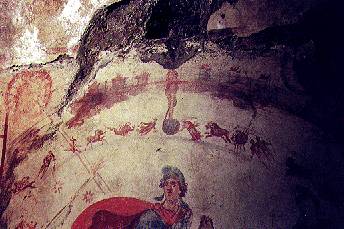
Fig 2: The lion-headed figure in the Barberini tauroctony with
zodiac
and fire-altars (detail)
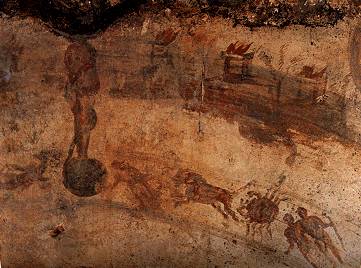
Fig 3: The lion-headed figure in the Barberini tauroctony (detail)
Although his head is unfortunately damaged, this figure is undoubtedly the famous Mithraic leontocephaline or lion-headed figure, who is always depicted with a snake winding around him. His position here precisely at the level of the zodiac and just beyond is intriguing, for it suggests that there is a special connection between the leontocephaline and the region of the zodiac. This connection is confirmed by the fact that the body of the leontocephaline is often decorated with the zodiac (e.g., CIMRM 545 and 879; see Fig. 4) or stands on a globe representing the sphere of the fixed stars, on which of course the zodiac is located (CIMRM 382, 390, 543, 551, 1051, 1705, 2320; see Fig. 5).

Fig. 4: Torso of lion-headed figure with zodiac (CIMRM 879)
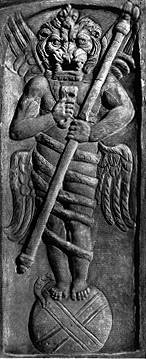
Fig. 5: Lion-headed figure standing on cosmic
sphere
and holding key in right hand (CIMRM 543)
This connection between the leontocephaline and the zodiac can
be clarified by noticing that in Origen's Contra Celsum,
Celsus describes a Mithraic symbol consisting of a ladder with
seven gates, each associated with one of the seven planets, while
at the top there is an eighth gate associated with the sphere
of the fixed stars and leading to the region beyond that sphere
(VI:22). The leontocephaline, as is well-known, almost always
holds a key (according to Maarten Vermaseren he does so in the
Barberini painting, although it is difficult to see [1]), and
this key is reasonably identified as the key to the celestial
gates described by Celsus. However, since the leontocephaline
is never linked in Mithraic iconography with any of the planets,
but is clearly associated with the zodiac, it seems likely that
he has a special connection with Celsus' eighth gate-- that of
the sphere of the fixed stars and the realm beyond it-- since
it is on that sphere that the zodiac lies.
In addition, the painting at Barberini depicts the region outside
of the zodiac-- into which the leontocephaline's body extends--
in a specific way: above the zodiac is an arch containing a row
of six altars with fires burning on them (see again Figs. 1,2,3).
Scholars have often assumed that these fires represent the planets.[2]
However, there are two decisive arguments against this explanation.
First, the fires are depicted as lying beyond the zodiac,
which is of course contrary to all Greco-Roman astronomy, in
which the planets are understood as being closer to the earth
than is the sphere of the fixed stars on which the zodiac is
located. And second, of course, there are only six fires, while
the planets are always seven in number. In response to the problem
of there being only six fires, it has been suggested that the
leontocephaline either hides or substitutes for a seventh fire.[3]
However, this suggestion is untenable, since in CIMRM 368, a
Roman relief from the Esquiline remarkably resembling the Barberini
painting, there are clearly only six fire-altars above Mithras
(see Fig. 6). In fact, there also exist tauroctonies in which
there are nine fire-altars (CIMRM 1128) or four fire-altars (CIMRM
1816) above Mithras, indicating that the specific number of altars
was not fixed.
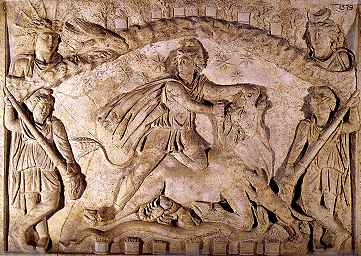
Fig. 6: Esquiline Tauroctony (CIMRM 368)
The comparison between the Esquiline relief and the Barberini
painting reveals two interesting facts. First, the comparison
makes absolutely certain that the Mithraists understood the cave
in which Mithras kills the bull as symbolizing the cosmos, since
in the Esquiline relief the arch separating Mithras from the
six fires above is the roof of the cave, while in the Barberini
painting exactly the same position and role are filled by the
arch of the zodiac.
Second, the Esquiline relief also includes a second set of fire-altars,
this time indeed numbering seven, at the very bottom of
the image. Most scholars are now agreed that the animal figures
in the bull-slaying icon represent a series of constellations
located on the sphere of the fixed stars. Thus the seven fires
placed in the Esquiline relief below the bull-slaying
-- that is, below the sphere of the fixed stars-- are
in the proper astronomical location for the planets. Thus the
lower set of fires agrees both in number and position with the
planets, and thus most likely does represent the planets, while
the upper set of fires does not fit with the planets either in
number or in position.
But if the six upper fires in the Esquiline relief and the Barberini
painting do not represent the planets, what do they represent?
An obvious answer to this question is immediately apparent if
we merely take seriously the fact that the fires in the Barberini
painting are clearly located outside of the zodiac, and
hence beyond the sphere of the fixed stars. For throughout
antiquity there existed a widespread belief that the outermost
region of the cosmos was occupied by a realm of fire.
Deriving from the experience of the light-giving quality of the
stars and planets, the light- and heat-producing quality of the
sun, and the upward-moving tendency of fire, the earliest Greek
philosophers already identified the sky as a realm of fire. As
Charles Kahn says, "Both Parmenides and Anaxagoras seem
to have identified the aither or sky with elemental fire...."
and Anaximander's cosmology seems to have placed a sphere of
flame at the outer boundary of the universe.[4] The Pythagorean
Philolaus appears to have held a similar opinion, since according
to Aetius he said that in addition to the existence of a fiery
"hearth" at the center of the universe there is "...again
another fire at the uppermost place, surrounding the whole."[5]
Plato as well seems to have adopted the idea of fire as existing
in the furthest region of the cosmos in Timaeus 62D-63E,
since, as F.M Cornford notes in his commentary on this passage,
for Plato the elements are here understood as arranged "in
a definite order: fire around the circumference (where it is
the chief constituent of the stars' bodies), next the spheres
of air and water, and earth at the center."[6]
The idea of a fire at the outermost boundary of the universe
later became a commonplace in Stoic thought. Cleanthes, for example,
according to Cicero taught that "the most unquestionable
deity is that remote all-surrounding fiery atmosphere called
the aether, which encircles and embraces the universe on its
outer side at an exceedingly lofty altitude."[7] Chrysippus,
notes David E. Hahm, speaks of "the aether, which
is the name he gives to the fire at the periphery of the cosmos."[8]
Among the Middle and Neo-Platonists there was also a widespread
belief that the outermost region of reality was a fiery domain.
Based on Plato's famous allegory of the cave and of the sun-filled
realm outside of it, the doctrine arose that beyond the universe--
in the "place beyond the heavens" (hyperouranios
topos) of Phaedrus 247B-C-- there existed a hypercosmic
sun or light (I have discussed this in detail in my article "Mithras
and the Hypercosmic Sun"[9]). An early example is found
in Philo's De Opificio Mundi VIII.31, where he speaks
of
a star above the heavens, the source of those stars which are perceptible by the external sense, and if any one were to call it universal light he would not be very wrong; since it is from that the sun and moon, and all the other planets and fixed stars derive their due light....[10]
And a bit further on, in XXIII 69-71, Philo pictures a mind
journeying through the world and then up through the heavenly
spheres until it passes the outermost boundary of the universe,
at which point "rays of divine light are poured forth upon
it like a torrent, so as to bewilder the eyes of its intelligence
by their splendour."[11]
Finally, an exact parallel to the picture in the Barberini mithraeum
of a fiery realm outside the cosmos is found in the Chaldaean
Oracles. In the Chaldaean cosmology the highest world is
beyond the cosmic sphere (hyperkosmios or hyperouranios)[12]
and is called the fiery cosmos or the "Empyrean" realm
(kosmos pyrios or empyrios).[13]
Given all of this evidence for the ancient belief in the presence
of a fiery realm at the outermost place in the universe, the
depiction in the Barberini painting of fires just outside the
boundary of the cosmos makes perfect sense. Indeed, additional
support for a connection between the leontocephaline and the
aetherial cosmic fire can be found in the fact that the Mithraic
leontocephaline, as is well known, is frequently associated with
fire-symbolism in a variety of ways, extending even to the existence
of statues of the leontocephaline apparently designed so that
fire could be sent shooting out of its mouth.[14]
However, an additional factor in the Barberini painting may help
us gain further clarity about the significance of the Mithraic
leontocephaline. It is notable that the placement of the leontocephaline
at Barberini seems designed to emphasize the concepts of boundary
and boundary-crossing. The globe on which the figure stands is
located exactly on the arching zodiacal boundary of the universe,
while the figure itself extends beyond that boundary as a kind
of incarnation of the process of boundary-crossing.
If the leontocephaline, as I would like to suggest, does have
a connection with the idea of a cosmic boundary, then crucial
pieces of his cryptic symbolism take on a new importance. Perhaps
most obvious is the key that he almost always holds, for the
key is one of the most appropriate of all symbols of boundaries
and boundary-crossing. Thus the goddess Hekate, mistress of boundaries
and crossroads, was from Hellenistic times on often associated
with the symbol of the key.[15] And in his work On the Genius
of Socrates 591 A-C, Plutarch describes how the three Fates
guard the thresholds between cosmic realms, each of them holding
a key. Significantly, the first of these cosmic thresholds, presided
over by the Fate Atropos, is that which separates what is outside
the cosmic sphere from what is inside it.[16]
The key held by the Mithraic leontocephaline, then, indicates
his role as a type of boundary guardian: specifically, as we
have seen, the Barberini symbolism shows that he is associated
with the boundary between what is inside and what is outside
the cosmic sphere. But what could be the significance of this
boundary such that the Mithraists were motivated to personify
it in the form of a powerful divine being?
An answer to this question can be found in the fact that the
Mithraists were surprisingly not alone in the seemingly peculiar
act of personifying the cosmic boundary. For in the Chaldaean
Oracles (where, as we saw earlier, it is taught that there
exists beyond the universe a realm of fire) the boundary between
the cosmos and what is beyond was personified in the figure of
the goddess Hekate, a central divinity in the Oracles' religious
system.[17]
The figure of Hekate in the Chaldaean Oracles derives
ultimately from speculations on Plato's description of the World-Soul
in his dialogue Timaeus. There, Plato says that the Demiurge--
the creator of the universe-- as part of the process of creation
made a soul for the cosmos as a whole. Plato says that the Demiurge
set this "World-Soul" in the center of the cosmos "and
caused it to extend throughout the whole and further wrapped
[the body of the cosmos] round with soul on the outside...."[18]
The World-Soul of Plato became the object of extraordinarily
complex and far-reaching speculations in subsequent Platonic
and other Greek philosophy, but it always retained its role as
the boundary of the cosmos and the mediator between the cosmos
and the realm beyond. The fact that in the Chaldaean Oracles
this abstract entity became personified as the goddess Hekate
shows that it is at least plausible that the Mithraic leontocephaline
could represent a similar personification of the cosmic boundary.
And, we should note, this plausibility is strengthened significantly
by the fact that the Chaldaean Hekate, like the Mithraic leontocephaline,
is constantly associated with an array of symbols involving fire.[19]
But the key piece of evidence supporting our hypothesis that
the leontocephaline is a symbol of the cosmic boundary, and that
he is linked, like the Chaldaean Hekate, to the Platonic World-Soul,
lies in the most consistent of all of the attributes of the leontocephaline:
namely, the snake that is almost always shown wrapped around
him.
Many explanations for the presence of the snake wrapped around
the leontocephaline have been offered, focusing on the snake
as a solar symbol, as a symbol for cosmic time, or as a symbol
of the celestial ascent of the soul.[20] However, the connection
between the leontocephaline and the cosmic boundary and World-Soul
that we have been tracing here suggests an additional factor:
for there exists solid evidence that the World-Soul in its role
as boundary of the universe was sometimes symbolized as a serpent.
This evidence is found in Origen's Contra Celsum, immediately
following his discussion of the Mithraic eight-gated ladder.
In Book VI, chaps. 24ff., Origen discusses the teachings of the
Gnostic sect of the Ophites or serpent-worshippers as expressed
in certain diagrams of theirs. In one of these diagrams, he says,
was "a drawing of ten circles, which were separated from
one another and held together by a single circle, which was said
to be the soul of the universe and was called Leviathan."[21]
Origen goes on to explain that this Leviathan is a great serpent,
symbolizing the soul that permeates the universe. That this serpent
specifically represents Plato's World-Soul is proven by
the fact that according to Origen the diagram showed Leviathan
twice, once in the center and once around the circumference,
just as in the Timaeus Plato said that the World-Soul
was placed in the center of the cosmos and also wrapped around
the outside. Other Gnostic systems also made use of this symbol
of a serpent wrapped around the outside of the universe: according
to the Pistis Sophia, "The outer darkness is a great
dragon, whose tail is in his mouth, outside the whole world and
surrounding the whole world."[22]
Here we see the Platonic World-Soul as boundary of the cosmos
symbolized by an encircling serpent. The parallel with the Mithraic
leontocephaline as the serpent-entwined symbol of the cosmic
boundary is, of course, compelling. But there is one final piece
of evidence that is, I think, decisive. For there is in Mithraic
iconography another figure besides the leontocephaline who is
depicted as entwined by a serpent: namely, the god Oceanus. Oceanus
is often depicted in the tauroctony beside the image of Mithras
ascending in the chariot of the sun, and is easily identifiable
by associated watery symbols such as waves, a boat, an oar, a
vase, or a sail (see Fig. 7).[23] However, a number of times
the figure beside the image of Mithras in the chariot is depicted
as entwined by a serpent in exactly the same way as the leontocephaline
(see Fig. 8).[24] As Manfred Clauss and M.L. West have noted,
this serpent-entwined figure must also be Oceanus.[25] But why
is he entwined by a snake exactly like the leontocephaline?
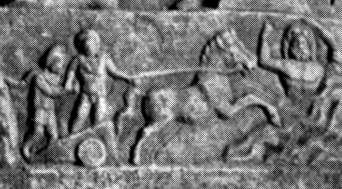
Fig. 7: Oceanus (on right) with waves and holding sail over head (CIMRM 2244)

Fig. 8: Oceanus (on right) entwined in serpent (CIMRM 1958)
Our discovery of the leontocephaline's connection with the boundary
of the cosmic sphere provides an obvious answer to this question,
for of course the most important function of Oceanus in antiquity
was as a symbol of the outermost circular boundary of the world.[26]
The fact that both the leontocephaline and Oceanus are identically
entwined by a serpent, therefore, makes perfect sense: the serpent
around each of them symbolizes their roles as ultimate boundaries.
And, conversely, the fact that in Mithraic iconography Oceanus--
the boundary of the world-- is entwined by a serpent provides
remarkable support for my claim that the serpent-entwined leontocephaline
also symbolizes the cosmic boundary-- and hence the Platonic
World-Soul-- as indicated by the Barberini painting.
One last piece of evidence in this connection is worth noting.
In the Acts of Thomas, the same text that includes the
famous Gnostic Hymn of the Pearl, the apostle Thomas is
confronted by a serpent. The serpent speaks to him, and at one
point says, "I am son of him who girds the sphere about;
and I am kinsman of him who is outside the ocean, whose tail
is set in his own mouth."[27] Here, exactly as in the Mithraic
evidence, we find an enclosing serpent related simultaneously
to the world-containing ocean and to the boundary of the cosmic
sphere.
I will close by noting that if the leontocephaline did indeed
function partly as a symbol for the ultimate boundary of the
universe, this would be in complete harmony with the theory I
proposed in my book The Origins of the Mithraic Mysteries[28]
that Mithraism began as a religious response to Hipparchus's
discovery of the precession of the equinoxes. For if Mithras
represented the force responsible for moving the entire cosmic
sphere in the way revealed by Hipparchus's discovery, then he
must have been understood as being a divinity whose essential
power lay in the hypercosmic realm. As a result, it is easy to
see how a symbol for the division between the cosmic and hypercosmic
realms would have come to play an important role in the iconographical
repertoire of his worship.
-- Notes --
*CIMRM refers to Martin Vermaseren, Corpus Inscriptionum et Monumentorum Religionis Mithriacae (The Hague: Martinus Nijhoff, 1956, 1960) 2 vols.
[1] M.J. Vermaseren, Mithriaca III: The Mithraeum at Marino
(Leiden: E.J. Brill, 1982) p. 85.
[2] See Roger Beck, Planetary Gods and Planetary Orders in
the Mysteries of Mithras (Leiden: E.J. Brill, 1988) s.v.
index I.A.1, #390.
[3] Ibid., p. 32.
[4] Charles H. Kahn, Anaximander and the Origins of Greek
Cosmology (Philadelphia: Centrum Philadelphia, 1985) pp.
90-91.
[5] DK A16 (=Aetius 2.7.7), trans. Carl A. Huffman, Philolaus
of Croton (Cambridge: Cambridge Univ. Press, 1993) pp. 237-8.
[6] F.M Cornford, Plato's Cosmology (London: Routledge
and Kegan Paul, 1937) p. 265.
[7] De Natura Deorum I.37, trans. H. Rackam, Cicero:
De Natura Deorum (Cambridge: Harvard Univ. Press, 1933) p.
41.
[8] David E. Hahm, The Origins of Stoic Cosmology (Ohio
State Univ. Press, 1977) p. 158.
[9] David Ulansey, "Mithras and the Hypercosmic Sun"
in John R. Hinnells, Studies in Mithraism (Rome: "L'Erma"
di Bretschneider, 1994) pp. 257-64.
[10] Trans. C. D. Yonge, The Works of Philo (Hendrickson
Publ., Inc., 1993) p. 6.
[11] Ibid., p. 11.
[12] Hans Lewy, Chaldaean Oracles and Theurgy (Paris:
Études Augustiniennes, 1978), p. 151 nn. 311-313, p. 328
nn. 57-8.
[13] Ibid., pp. 77 and n. 40, 137 and n. 270, 201-3, 430-1.
[14] For the fire-breathing of the leontocephaline see Howard
Jackson, "The Meaning and Function of the Leontocephaline
in Roman Mithraism," Numen 32.1 (July, 1985) p. 28;
CIMRM 383 shows the leonotocephaline igniting a fire altar with
his breath while holding a torch in each hand. For other fire
symbols associated with the leontocephaline see CIMRM 103, 383,
589 (torches); 312 (thunderbolt, hammer and tongs); and 1123
(fire shovel).
[15] See Sarah Iles Johnston, Hekate Soteira (Atlanta:
Scholars Press, 1990), pp. 39-48.
[16] See Phillip H. De Lacy and Benedict Einarson, trans., Plutarch's
Moralia (Cambridge: Harvard Univ. Press, 1959) vol. VII,
p. 467 note d; John Dillon, The Middle Platonists (Ithaca:
Cornell Univ. Press, 1977) p. 215.
[17] For a complete discussion of Hekate's role as boundary between
the cosmic and the hypercosmic, and of the relationship between
the Chaldaean Hekate and the Platonic World-Soul, see Johnston,
Hekate.
[18] Timaeus 34B, trans. Cornford, Cosmology, p.
58. Emphasis mine.
[19] See Johnston, Hekate, pp. 64, 119-120, 126-127, 160.
[20] See Jackson, "Meaning," p. 20 and n. 13; J.R.
Hinnells, "Reflections on The Lion-Headed Figure in Mithraism,"
Monumentum H.S. Nyberg (Leiden: E.J. Brill, 1975) vol.
1, pp. 356-7; Beck, Planetary Gods, pp. 54-7; David Ulansey,
The Origins of the Mithraic Mysteries: Cosmology and
Salvation in the Ancient World (New York and Oxford: Oxford
University Press, revised paperback, 1991), p. 120. Interestingly,
the Arles leontocephaline torso (CIMRM 879-- see Fig. 4 above)
makes it difficult to argue that the snake symbolizes the path
of the sun, since the snake here moves backwards through
the zodiac. However, notice that this backwards movement
through the zodiac is the same direction as that of the precession
of the equinoxes, the discovery of which, I have argued in
Origins, was the catalyst for the creation of the Mithraic
mysteries.
[21]VI:25, trans. Henry Chadwick, Origen: Contra Celsum
(Cambridge: Cambridge University Press, 1953) p. 340; see also
VI:35 (Chadwick, p. 351). Cf. Lewy, Oracles, p. 354.
[22] Trans. G.R.S. Mead, Pistis Sophia (London: John M.
Watkins, 1963) p. 265.
[23] CIMRM 693, 1975, 2034, 2038, 2202, 2244, 2272, 2310, 2338.
[24] CIMRM 1935, 1958, 1972, 2166, 2171, 2291.
[25] Manfred Clauss, The Roman Cult of Mithras (Edinburgh:
Edinburgh Univ. Press, 2000) p. 152; M.L. West, Early Greek
Philosophy and the Orient (Oxford: Oxford Univ. Press, 1971)
p. 45 and Plate III.
[26] For complete discussion see James S. Romm, The Edges
of the Earth in Ancient Thought (Princeton: Princeton University
Press, 1992) pp. 12-26.
[27] Acts of Thomas 32; trans. in Edgar Hennecke, New
Testament Apocrypha (Lutterworth Press, 1965) p. 460.
[28] Ulansey, Origins.
RETURN TO THE COSMIC MYSTERIES OF MITHRAS
RETURN TO HOME OF DAVID ULANSEY